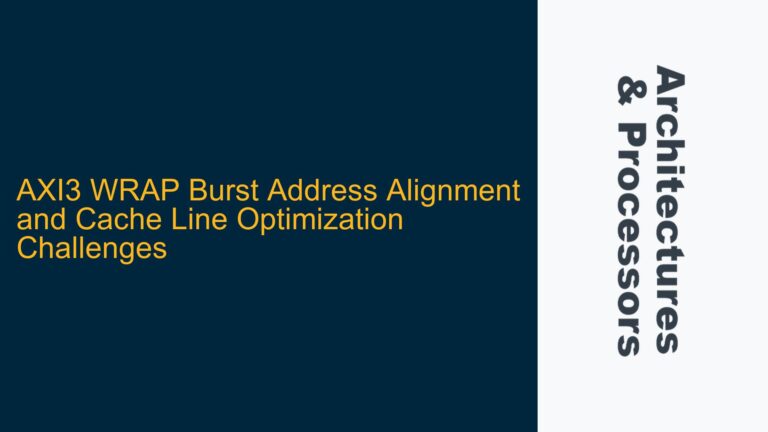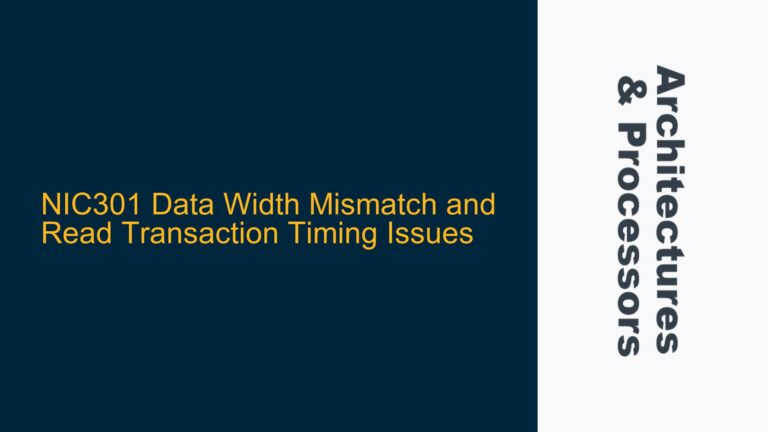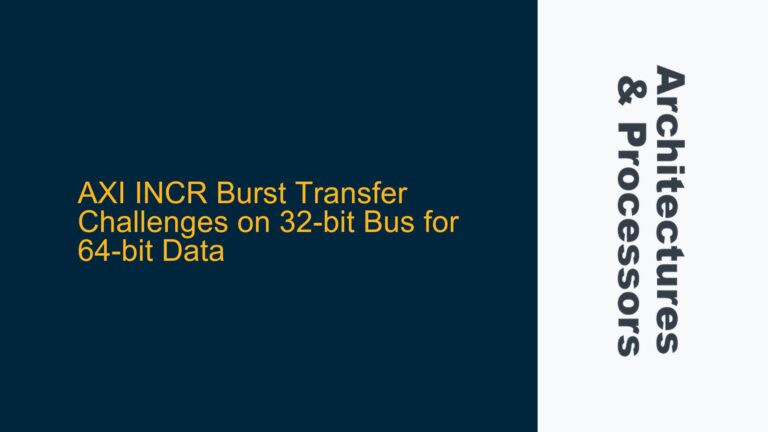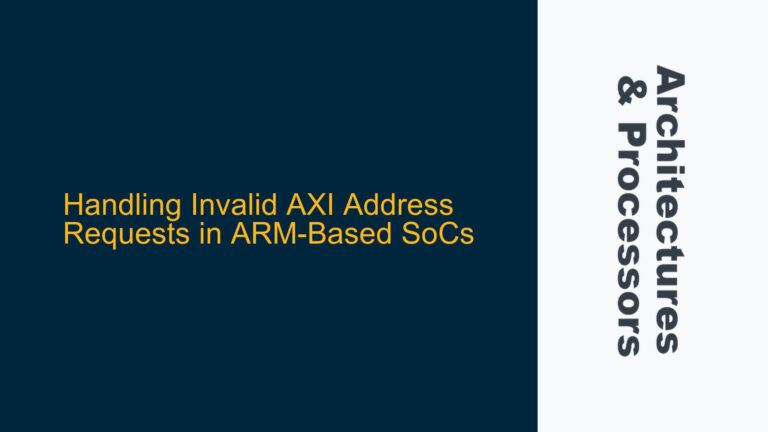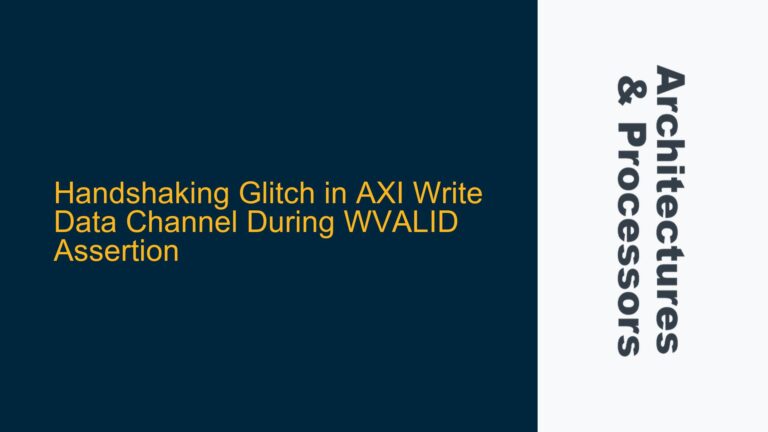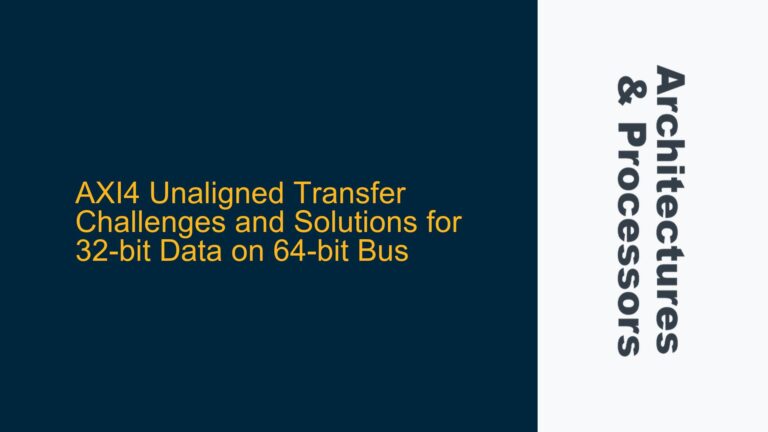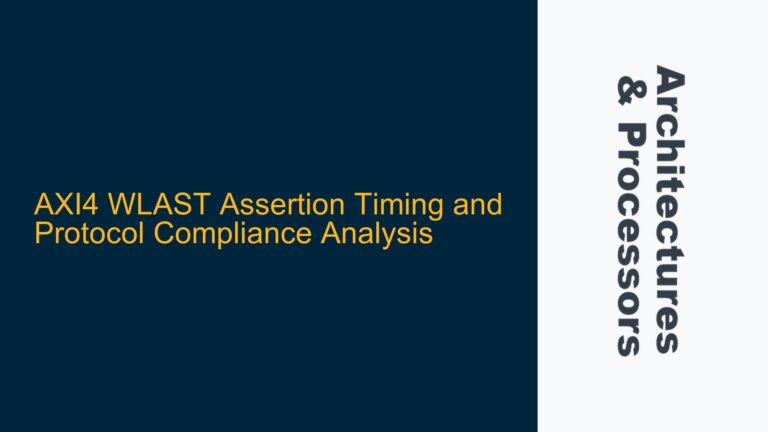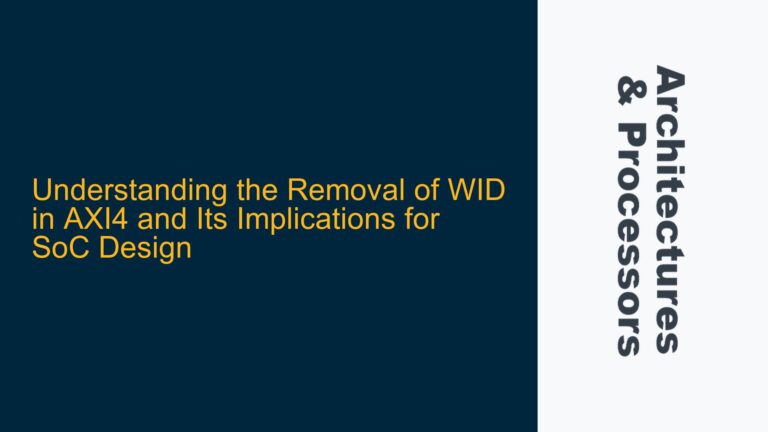AXI Channel Handshake Deadlock Prevention and Protocol Compliance
VALID Before READY Handshake Rule in AXI Protocol The AXI protocol specifies a critical rule regarding the handshake process between the VALID and READY signals: a source is not permitted to wait for the READY signal to be asserted before asserting the VALID signal. This rule is fundamental to the proper operation of the AXI…

